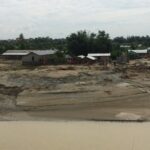In envisioning Nepal’s infrastructure 2030, we may first think what is achievable. Assuming per capita GDP reaching $1,800 and public capital spending growing from 5% of GDP (now) to 10%, Nepal will have $55 billion invested in infrastructure by 2030. With this, Nepal can have 10,000 MW generation, and modern transmission and distribution systems (costing $25 billion but 50% plus can be privately funded).
For transport, major highways will be upgraded to four lanes, Fast Track expressway competed, strategic and local roads connecting all VDCs black-topped, and modern international airports built and open (costing $20 billion). We may also envision trilateral collaboration started building trans-Himalaya-India railways and expressways. The rest of fund can largely address Nepal’s lagged urban infrastructure, to provide regular (24/7) water supply, sanitation, solid-waste management, urban roads, and quality transport services. Irrigation is also expanded with ground water lifted through abundant power supply in Terai, and gravity or lift systems for the rest. Such infrastructure can fully unleash Nepal’s development potentials of competitive industries, while converting people’s lives clean energy-based, including transport, cooking, heating, etc., moving towards clean, green, zero-carbon emission society.
But any vision is meaningful only if implemented. How then?
For this, the country needs to expedite sector investment planning and project (DPR) proposal preparation. Investable proposals are direly lacking now. For example, municipalities should have long-term urban development plans to cater to the growing population and industries in the next 30-50 years.
In the meantime, Nepal needs to revamp the systems and capacity constraints impeding timely and quality project implementation, including procurement (by streamlining using ICT), contract management (by strengthening disciplines and building capacities), interagency coordination (for faster statutory clearance), and enabling environment for private infrastructure investments.
Therefore, establishing institutional systems and capacities to plan, prepare, and implement all the envisaged infrastructure with sound governance and accountability mechanism is also a crucial element of Infrastructure 2030. ADB and its staff are glad to dedicate our financial and human resources to help achieve these important goals.





